Hide Show
The health and safety of our staff, customers, and community is our top priority. Read an important message from Principle MINI of San Antonio.
Many people often wonder what, if any, damage can be done to their vehicle if their tires are overinflated. It's an easy mistake to make if the air gauge is even the slightest bit misleading while you're airing up your tires. However, some car owners might do this on purpose and be under the impression and it's beneficial to their vehicle. What is fact and what is fiction? Our blog will hit on the common misconceptions of over-inflating your tires.
(photo source: Getty images)
We'll start with the bottom line first: overinflation is detrimental to your tires and can be dangerous. You should always adhere to the manufacturer's suggested tire pressure. This specific tire pressure has been predetermined by the car's manufacturer by a series of tests and has gone through rigorous analyzation for each model. It takes into account many factors such as tire wear and tread life, driving comfort and handling, and fuel efficiency.
On the inside of the driver's door is a label that indicates the recommended psi in all four tires for optimum performance. In addition, the sidewall of the tire shows the maximum pressure for the tires that shouldn't be exceeded.
Exceeding the optimum tire pressure is not recommended for many reasons.
Tires will wear out prematurely. Overinflated tires round out on the tread section and cause the center to wear down significantly faster than the outer edges. This could cause them to last only half as long as they typically would.
Overinflation can cause loss of traction. Even in normal driving conditions, you are more susceptible to losing traction, spinning out or crashing. Therefore, it is even more noticeable if your tires are overinflated in winter weather.
Overinflation creates a harsher ride. Overinflated tires create a rougher ride, so you are more likely to feel every dip and bump in the road.
Overinflated tires create a rougher ride, so you are more likely to feel every dip and bump in the road.
Something to keep in mind is that air pressure will vary with temperature, so expect to lose 1-2 psi for every 10-degree drop in temperature. To get the most accurate reading, leave your vehicle parked for at least three hours prior to adding air. Pulling into a gas station and immediately checking/filling up the air could alter the reading. The general rule of thumb is to subtract 2-3 psi from the reading due to the tires being warm.
Please follow all manufacturer guidelines of your vehicle especially when it comes to your tires. The maximum psi is set to insure your safety on the road and the longevity of your tires and neglecting to follow their recommendation can be very risky.
If it's time for your tires to to be rotated, aligned, or aired up, come see us for a quick check-up! Our technicians are happy to make sure your wheels are rolling smoothly. You can reserve an appointment time or drop in to see us!
You can reserve an appointment time or drop in to see us!
MINI of San Antonio is a new and used car dealership that provides vehicles to customers all over Texas. We have customers come in from Canyon Lake, New Braunfels, Austin, Kirby, Allen, Boerne and many more cities. Let us know if you have any questions.
Click here for directions to our MINI dealership // Click here to contact us
; ;
So, you got distracted while you were filling up your tires and accidentally added way too much air. Or, perhaps a friend told you that overinflated tires could improve your gas mileage. The truth is, whatever the reason for it, driving on overinflated tires can be damaging for your car and dangerous for you. Here’s what happens when you put too much air in your tires, and what you can do to restore proper tire inflation. The fix is quick and easy!
The fix is quick and easy!
There are a variety of issues that can occur if you drive on overinflated tires. Most seriously, overinflated tires are at greater risk for a blowout. A tire blowout can cause you to lose control of your vehicle and negatively affect braking distance, endangering yourself and others on the road.
Additionally, many of the safety features on your vehicle, like your anti-lock braking system, are designed to work when tires are filled to the vehicle manufacturer recommendations. Overinflated tires could compromise some of your car’s driver assistance functions.
Overinflating your tires can make them more vulnerable to damage. Like an overfilled balloon, tires filled to their maximum capacity are more stiff and inflexible, which makes them more susceptible to damage from potholes, curbs, or debris. Plus, as a driver or passenger, you’ll feel every bump and dip in the road, and that doesn’t make for a pleasant ride.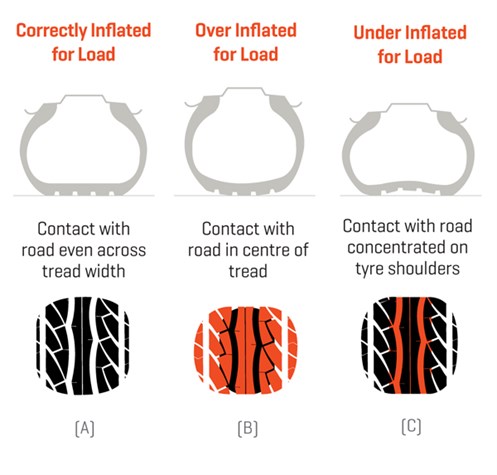
Excessive air pressure can also distort the shape of the tire, leading to decreased traction and increased wear and tear down the center of the tire. Depending on the circumstances, repeatedly overinflated tires could wear out more quickly.
A tire bulges in the center of the tread when you overinflate it. The only part of the tire touching the road is a small, skinny patch down the middle. In theory, "this should mean less rolling resistance and increased mileage," notes Popular Mechanics. But in reality? It means center tread wear, an uncomfortable ride, and increased risk for a blowout.
Note that a few PSI over your recommended tire pressure generally won't put you in the danger zone. After all, tire pressure fluctuates with the outside temperature. Your goal is to stay at your car manufacturer’s suggested cold tire pressure.
Alright, so what happens when you figure out you’ve overinflated your tires? Don't worry—fixing this air pressure problem is a breeze.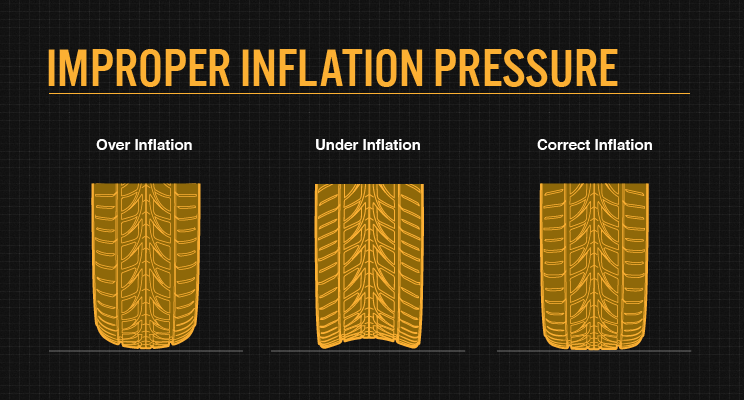 To get the most accurate tire pressure reading and inflation, follow these steps when your tires are "cold," either in the morning or after the car has been sitting for a few hours. Topping off warm tires may result in over-inflation. Likewise, checking the inflation pressure when the tires are warm may incorrectly suggest the tires are already over-inflated.
To get the most accurate tire pressure reading and inflation, follow these steps when your tires are "cold," either in the morning or after the car has been sitting for a few hours. Topping off warm tires may result in over-inflation. Likewise, checking the inflation pressure when the tires are warm may incorrectly suggest the tires are already over-inflated.
Many vehicles have tire-pressure monitoring systems, which will alert you with a TPMS dashboard light when significant underinflation occurs. However, the dash icon only lights up when tire pressure drops 25% or more below the manufacturer's recommended level.
However, the dash icon only lights up when tire pressure drops 25% or more below the manufacturer's recommended level.
There are a few places you can find your recommended tire pressure:
The recommended tire pressure is the optimal pressure for tires on your specific vehicle. It's calculated by the manufacturer using the total weight and size of your vehicle, its towing and payload capacity, and recommended tire size. Sticking to this number can help you get the best performance from your tires and extend tire lifespan.
Don’t underestimate the importance of proper tire inflation. Keeping your tires at the manufacturer’s recommended tire pressure is key to keeping you safe on the road and getting your money’s worth out of your tires.
Remember, no job is too small for us! Visit your local Firestone Complete Auto Care for a free tire pressure check, we’ll help you inflate (or deflate!) your tires.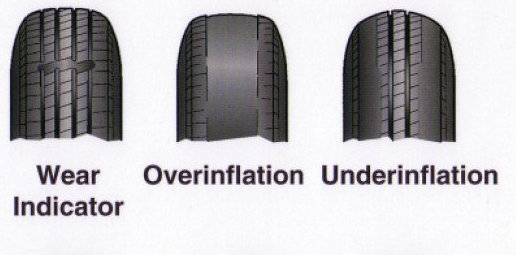
Photo avatars.mds.yandex.net
Every driver knows that in the driver's door arch there is an exact instruction on the pressure inside each wheel, based on its radius, vehicle weight distribution and many other engineering parameters. What happens if these figures are ignored?
Eduard Raskin
Our people are cunning in inventing and saving, therefore they are looking for ways to “reduce costs”, not even being distracted by sleep. True, the rate at which fuel is becoming more expensive is so great that many proven methods cannot keep up with it. And dangerous experiments begin. So it happened with the tires: they say, if you pump over the wheels, then the “appetite” of the car will noticeably decrease, and the speed increase will be noticeably easier. An all round profitable story! Go get the pump! nine0009
Alas, the reality is somewhat different. Firstly, if you seriously pump the wheel, then even during the exercises with the pump it will explode with amazing imagination and intestines with force. God forbid from such an experiment directly on the car - glass and body parts will suffer, and after washing your pants, you will have to make serious investments in cars. Rather, for a global restoration.
Firstly, if you seriously pump the wheel, then even during the exercises with the pump it will explode with amazing imagination and intestines with force. God forbid from such an experiment directly on the car - glass and body parts will suffer, and after washing your pants, you will have to make serious investments in cars. Rather, for a global restoration.
Secondly, owners of new tires can afford even minor experiments with pressure. The fact is that the cord - the power structure of the "rubber" - wears out over the years and will not tolerate such "familiarity". Underpumped or overzealous - get a hernia or a hole the size of a fist. At the tire fitting, they will only shrug their hands - this is not treated. nine0009
Photo avtopribambas.com
And finally, thirdly: pumped tires transfer all the hardships of the surface directly to the steering wheel and levers, causing not only discomfort and shaking, but also global suspension wear. The car begins to "roam" and goat on every bump.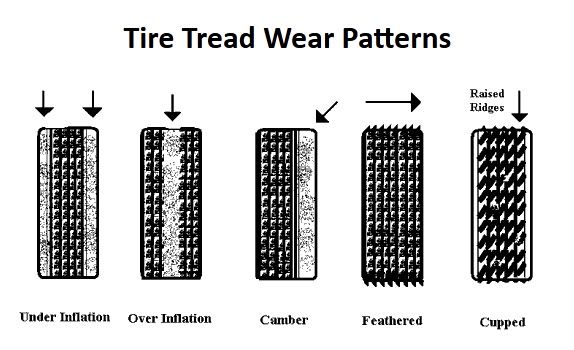 Excess pressure leads to the approach of the skid effect, because the contact patch with the road decreases in direct proportion to the excess of the "capital" number of atmospheres. The fourth point puts an end to savings: over-inflated tires wear out quickly in the center of the tread and require an early replacement. Such expenses are not offset by savings on gasoline. nine0009
Excess pressure leads to the approach of the skid effect, because the contact patch with the road decreases in direct proportion to the excess of the "capital" number of atmospheres. The fourth point puts an end to savings: over-inflated tires wear out quickly in the center of the tread and require an early replacement. Such expenses are not offset by savings on gasoline. nine0009
When it comes to real and safe savings, the fuel cost reduction program should start in the store: modern high-tech tires actually allow significant cost savings at gas stations through design. And you need to continue your path to reducing consumption at a tire fitting: only a wheel balanced on a disk can spin along the correct and therefore economical radius. An independent change in pressure in one direction or another from the factory indices will not lead to anything other than additional expenses. nine0009
car service, repair, tyres, tyres, maintenance
Both truck and passenger tires inevitably wear out during operation, in other words, they wear out.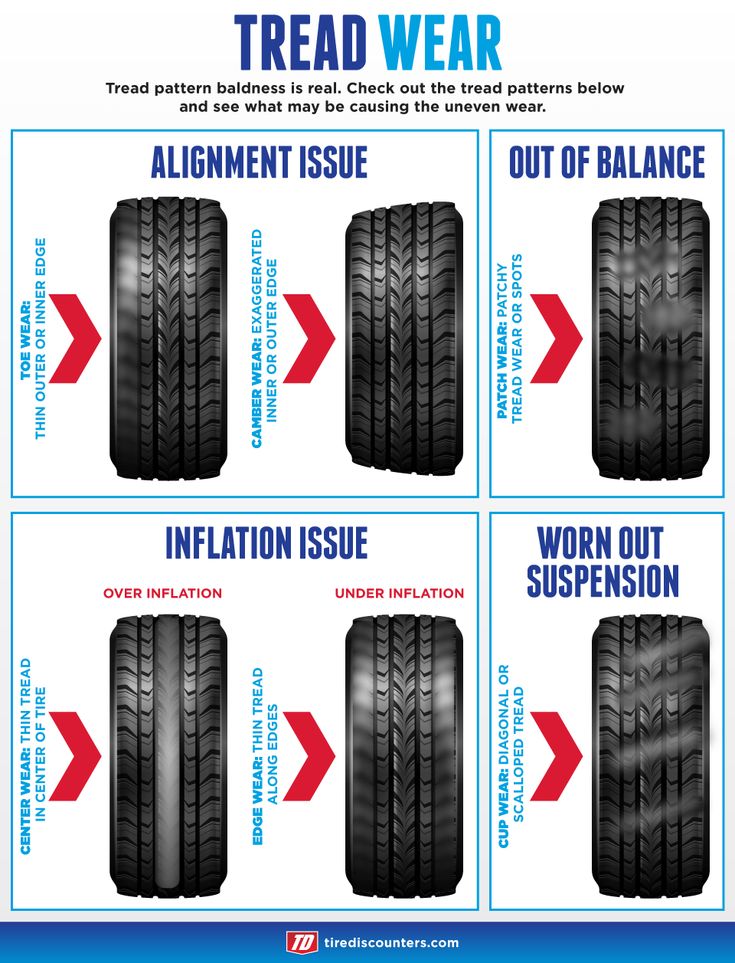 Modern technologies can significantly increase the resource of tires in comparison with previous generations, however, no company has yet invented “eternal” wheels. In addition, we can highlight a list of factors under the influence of which tires wear out many times faster. Taking into account these nuances and their prevention will allow you to enjoy the softness of the movement, the clarity of control and braking for as long as possible without prematurely spending on new tires. nine0009
Modern technologies can significantly increase the resource of tires in comparison with previous generations, however, no company has yet invented “eternal” wheels. In addition, we can highlight a list of factors under the influence of which tires wear out many times faster. Taking into account these nuances and their prevention will allow you to enjoy the softness of the movement, the clarity of control and braking for as long as possible without prematurely spending on new tires. nine0009
With a lack of air pressure in tires, a whole range of changes is observed, leading to their rapid wear:
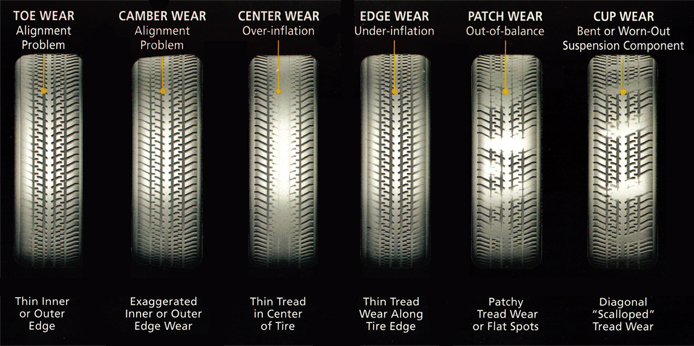 As a result, the wear of the tread shoulder zones is significantly accelerated; nine0004
As a result, the wear of the tread shoulder zones is significantly accelerated; nine0004 At the same time, for an accelerated failure of the rubber, a pressure drop of 0.5 atm is sufficient. On average, this reduces wheel life by 20%.
For tires, not only low, but also high pressure is harmful - when driving on pumped wheels, the rubber will also wear out too quickly. This state of affairs is due to the following points: nine0009
 If there is any damage in its structure, then under the influence of heating they can develop into full-fledged hernias and ruptures. In the most severe cases, an overinflated wheel may explode; nine0004
If there is any damage in its structure, then under the influence of heating they can develop into full-fledged hernias and ruptures. In the most severe cases, an overinflated wheel may explode; nine0004 It should be noted that increased tire pressure is less damaging than low pressure.
The wheels of the car are not installed directly perpendicular to the ground, but at a slight angle. This allows you to compensate for the negative impact of longitudinal forces on a rotating wheel and improves vehicle handling. An incorrectly set or misaligned wheel alignment can lead, among other things, to early tire wear. This is due to the following aspects:
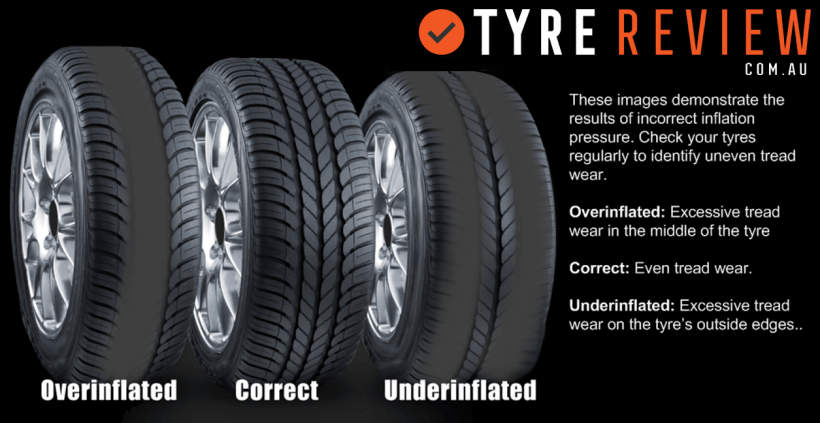
As a result, characteristic burrs appear on the tire. Gradually, they increase in size, which indicates irreversible deformations of the wheel structure.
In addition, factors such as:
Our company represents high-quality Goform tires supplied by a certified manufacturer from China. They optimally combine an attractive price that will appeal to any motorist, and high quality, combining the company's own long-term developments and rich world experience in the production of tires. nine0009
The high performance rubber compounds used for Goform tires provide them with increased strength and durability. At their affordable price, they are distinguished by outstanding wear resistance and perfectly tolerate driving on far from ideal Russian roads.